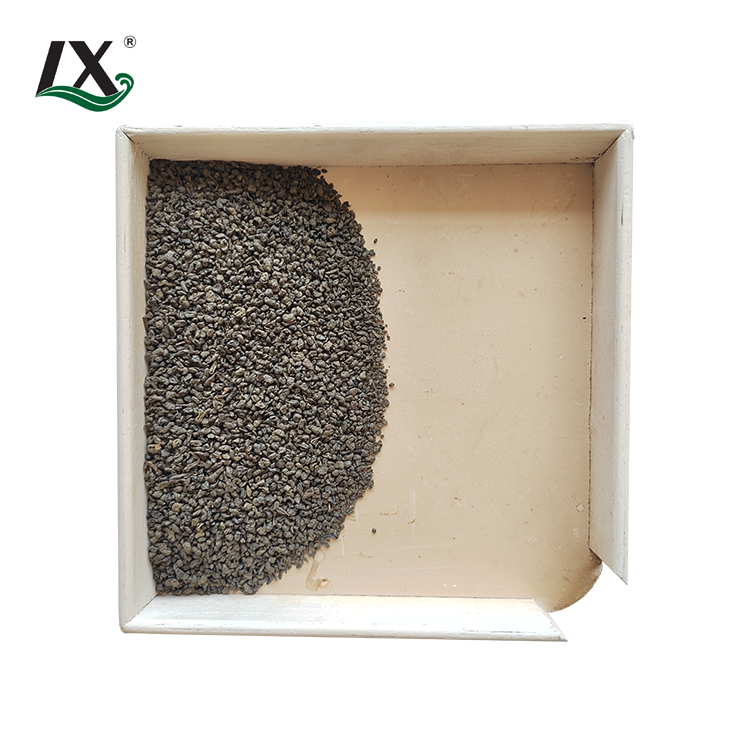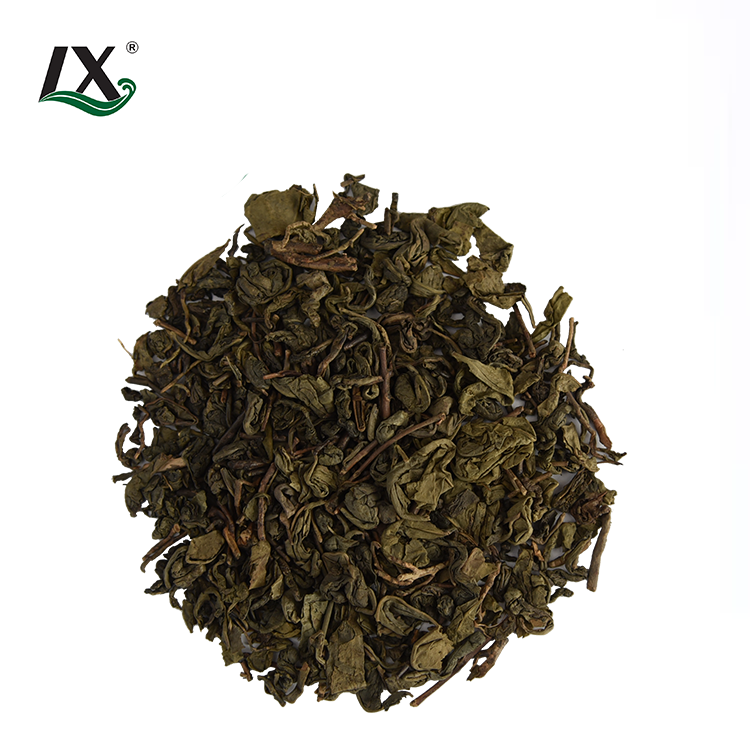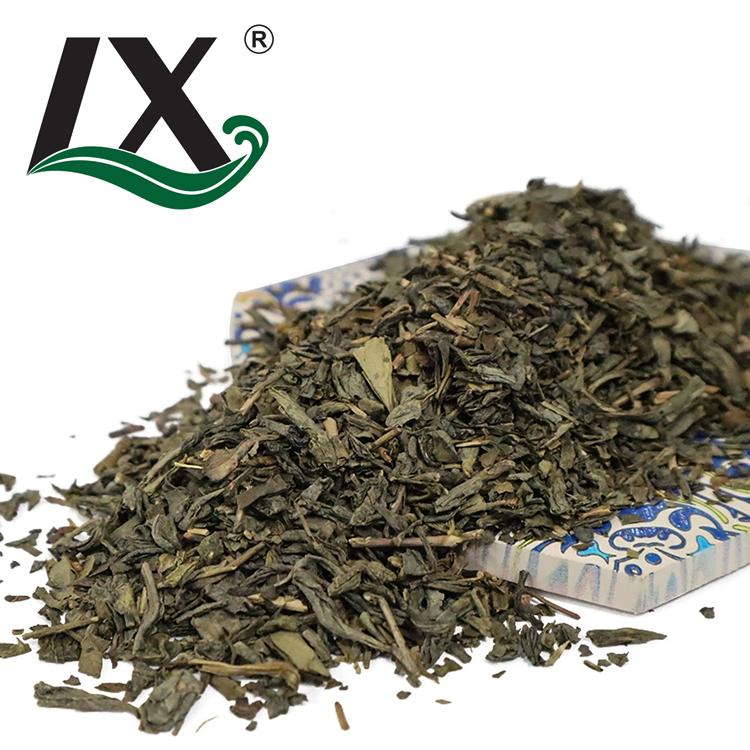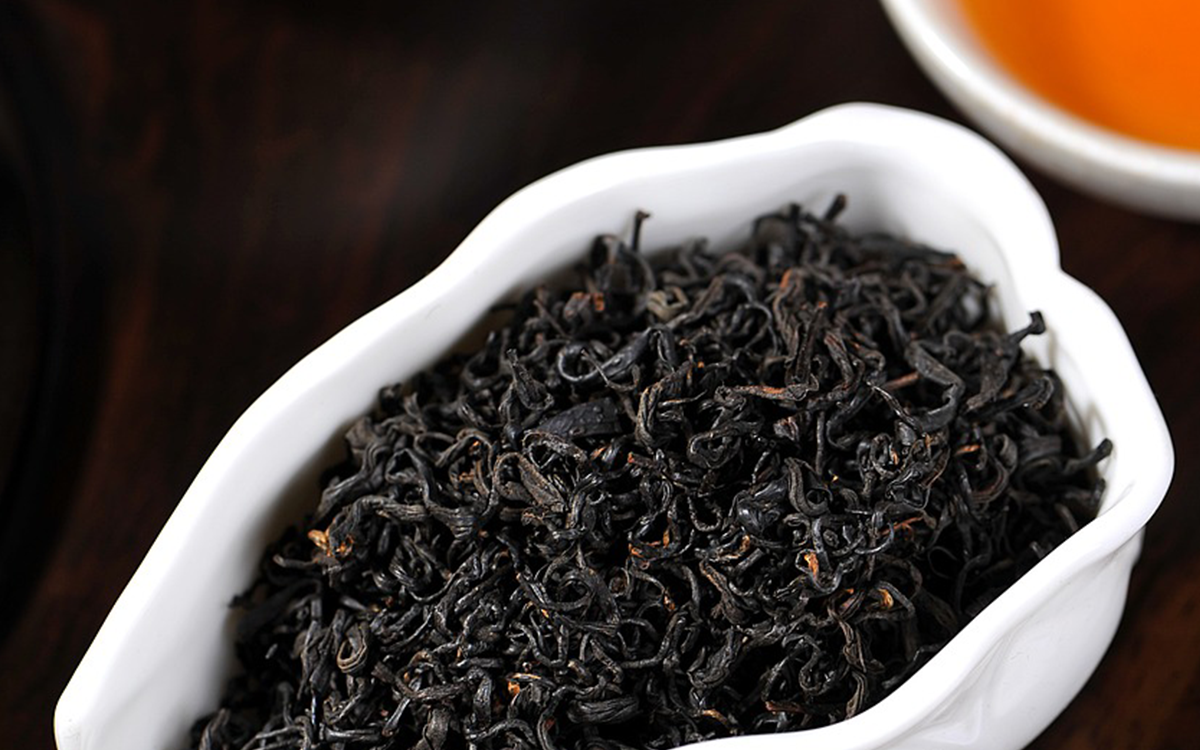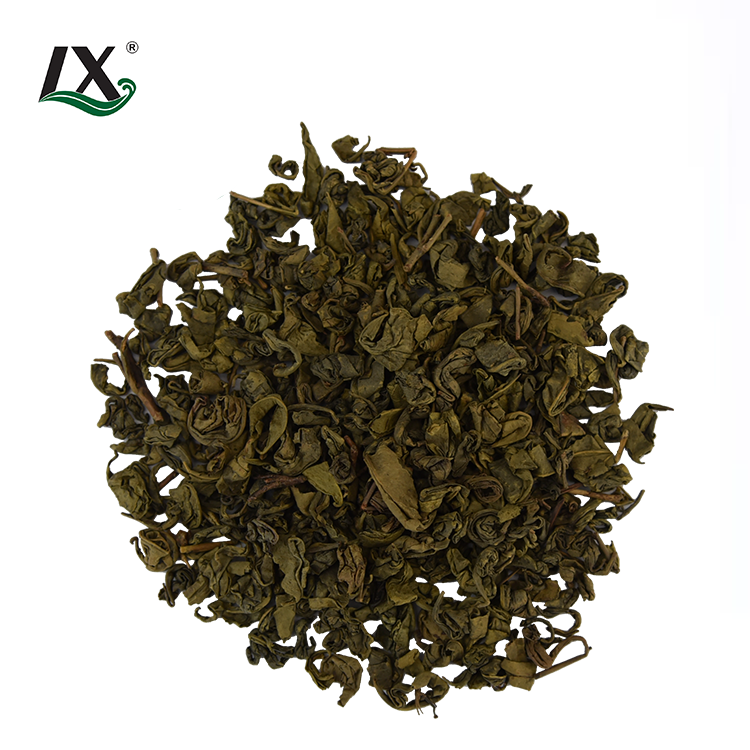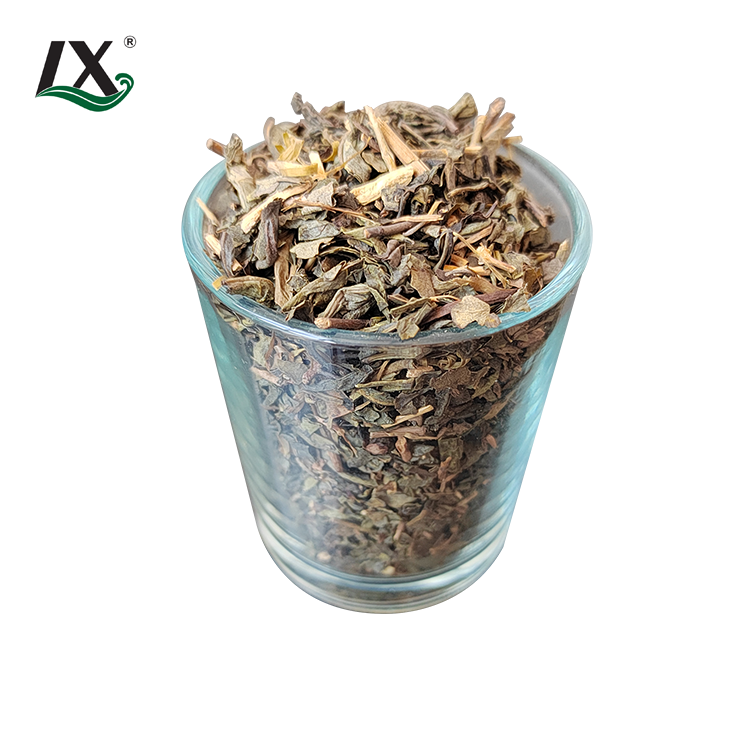What Does the Numbers 41022 on Tea Mean? All You Need to Know About Grading Codes
If you've ever come across the term "Chunmee 41022" or noticed other numbers associated with tea grades, you may wonder what these numbers signify. The numbers like 41022 in tea grading are more than just labels; they represent a systematic classification of the tea's quality, leaf size, and processing precision. Understanding these grading codes can help tea enthusiasts and consumers make informed choices about the type and quality of tea they're buying.
In this blog, we’ll explain what the numbers like 41022 mean, how tea grading works, and why it matters when selecting your next cup of tea.
Understanding Tea Grading: A Brief Overview
Tea grading is a system used to classify and evaluate tea leaves based on their quality, size, and appearance. This grading system is especially common in Chinese green teas, like Chunmee and Gunpowder teas. The numbers associated with tea grades offer insight into the precision of the processing and the leaf’s quality.
For example, in Chunmee Green Tea, the numbers often found after the name (such as 41022) help differentiate the tea's grade. The higher the number, the more refined and higher-quality the tea is likely to be.
What Does 41022 Mean?
The number 41022 is one of the most recognized grading codes for Chunmee green tea, a popular Chinese green tea known for its fine, tightly rolled leaves shaped like "eyebrows" (hence the name Chunmee, which means "precious eyebrows" in Chinese).
- 4: The first digit (4) represents the category of the tea. Chunmee teas are categorized in the "4" range.
- 10: The next two digits (10) refer to the quality of the tea leaves. In this case, 10 is a high-grade Chunmee tea.
- 22: The final two digits (22) refer to the refinement of the leaf processing. Higher numbers indicate more care in production, and 22 represents one of the finest Chunmee grades available.
The full number, 41022, signals a high-grade Chunmee tea with exceptional leaf quality and processing. It is considered one of the most premium grades in the Chunmee tea family, known for its smooth taste and consistent flavor.
Grading Code System for Chinese Green Teas (Chun Mee and Gunpowder) - Breakdowns
Structure of the Grading Code
The typical grading code is a five-digit number. Here’s how each part of the code works:
- First Digit: Represents the category or type of tea.
- Second and Third Digits: Represents the quality level of the tea leaves.
- Fourth and Fifth Digits: Represents the refinement of processing and production.
This system is mostly used for Chun Mee and Gunpowder teas, which are rolled green teas, but it can also be applied to other varieties.
1. First Digit – Tea Category
The first digit of the code represents the general category or type of tea. For example:
- 1: This typically refers to Gunpowder tea. Gunpowder tea leaves are rolled into small, tight pellets, and the grading system assesses their size, roll tightness, and overall quality.
- 2: Can also refer to Gunpowder tea but may indicate a different level of quality or processing technique than the "1" category.
- 3: This category can be used for other green teas, potentially more niche or specialized varieties that don’t fall strictly under Chun Mee or Gunpowder.
- 4: As you correctly mentioned, this digit refers to Chun Mee tea. Chun Mee tea leaves are rolled into a distinctive “eyebrow” shape, and this code indicates the Chun Mee category.
- 5, 6, etc.: It is less common, but these digits could be used for other types of Chinese green teas, such as Huangshan Maofeng or Lung Ching, or for regional or commercial variations that fall outside the Chun Mee or Gunpowder categories.
Thus, the first digit is essentially the identifier for the tea type or category, with "1" often denoting Gunpowder tea and "4" Chun Mee tea.
2. Second and Third Digits – Quality of the Tea Leaves
The second and third digits denote the quality of the tea leaves, with lower numbers representing higher quality. This grading depends on factors such as:
- Leaf size.
- Tenderness and uniformity.
- Appearance (whether the leaves are broken, rolled properly, etc.).
- Absence of stems or other non-leaf material.
For example:
- 10: A high-grade tea, often from younger, more tender leaves. The leaves are usually well-shaped and evenly processed.
- 11 to 20: Gradually decreasing in quality, with more variance in leaf size and shape. The tea may be made from older or less uniformly processed leaves.
- 30 and above: These represent standard or lower-quality teas, often produced in larger quantities and used in commercial blends. They may have more broken leaves, stems, or other imperfections.
3. Fourth and Fifth Digits – Refinement of Leaf Processing
The last two digits refer to the level of refinement in processing. This includes:
- The precision with which the leaves are rolled (tightly rolled leaves are seen as a sign of higher quality, especially for Gunpowder tea).
- The consistency of the tea leaf shape (whether the leaves are uniform and evenly processed).
- The attention to detail in sorting and grading the leaves after they are processed.
Higher numbers in this range indicate more care in production and better sorting, resulting in a more uniform, higher-quality tea.
- 22: Represents a finely processed tea with tightly rolled leaves that are highly uniform in appearance, often considered one of the finest grades in the Chun Mee or Gunpowder category.
- 30 and above: May indicate a lower level of refinement, with more variance in leaf size and rolling.
Why Does the Grading System Matter?
The tea grading system is crucial because it gives consumers a standard way to evaluate and compare teas. These numbers help buyers determine the quality of tea at a glance, providing insights into factors like:
- Leaf size and uniformity
- Processing precision
- Flavor profile and overall quality
For instance, a Chunmee 41022 tea will typically have smaller, more uniformly shaped leaves than a lower-grade Chunmee tea, and it will offer a smoother, more refined taste. Higher-grade teas like Chunmee 41022 also tend to have better aroma, less bitterness, and more pronounced health benefits due to their superior quality.
How Are Tea Grades Determined?
Tea grading is determined by several factors, including the appearance of the tea leaves, their size, and the production method. Let’s break down the key factors that influence a tea’s grade:
1. Leaf Size and Shape
In the grading process, one of the first things evaluated is the size and shape of the tea leaves. Smaller, more uniformly shaped leaves tend to brew a more consistent and refined tea, which is why grades like 41022 are associated with high quality. In Chunmee teas, the leaves are carefully rolled into thin, eyebrow-like shapes.
2. Processing Precision
The precision of the tea’s processing plays a significant role in its grade. Tea leaves that are meticulously processed tend to retain their flavor and nutrients better. Higher-numbered grades like 41022 represent the best of this meticulous processing, ensuring that the tea offers a more balanced, nuanced flavor with each cup.
3. Color and Aroma
Another key factor in tea grading is the color and aroma of the dried leaves. High-quality teas like 41022 typically have vibrant green leaves, indicating freshness and quality. The aroma of the leaves, even before brewing, should be pleasant and inviting, with a slightly sweet, grassy scent typical of premium green teas.
4. Flavor Profile
Finally, the taste of the brewed tea is essential in determining its grade. Teas like Chunmee 41022 are known for their delicate flavor, with a slight tanginess balanced by a smooth, sweet aftertaste. Lower-grade teas may have a more bitter or astringent flavor, which is less desirable in premium teas.
Tea grading codes are used to classify the quality, size, and refinement of tea leaves. In the case of Chunmee and Gunpowder teas, these codes—like 41022, 9371, and 9367—provide consumers with valuable information on the tea's quality, leaf size, and flavor profile.
What are Chunmee Tea Grading Codes?
Chunmee tea, known for its eyebrow-shaped leaves, is graded based on leaf size, uniformity, and processing precision. Here's a full breakdown of Chunmee tea grades from the highest to the lowest quality:
1. Chunmee 41022
- Grade: Premium, highest grade.
- Description: The finest Chunmee tea available, with small, uniform leaves that are tightly rolled. It offers a smooth, slightly sweet flavor with little bitterness.
- Taste Profile: Delicate, smooth, sweet with a light tang.
- Best For: Tea connoisseurs seeking the best quality.
2. Chunmee 4011
- Grade: High grade.
- Description: Known for good quality at a more affordable price than 41022. Leaves are slightly larger but still uniform and well-processed.
- Taste Profile: Balanced, mild sweetness with a hint of tang.
- Best For: Regular tea drinkers wanting a high-quality daily tea.
3. Chunmee 9371
- Grade: Mid-range.
- Description: A widely consumed Chunmee grade with larger leaves and less uniformity. The flavor is stronger than 4011 but still smooth enough for regular drinking.
- Taste Profile: Stronger, slightly astringent with a distinct tang.
- Best For: Everyday use for those seeking affordable but good-quality tea.
9 may indicate a lower category or commercial tea. 37 represents a lower quality leaf with some imperfections. 71 signifies an average level of processing.
4. Chunmee 9367
- Grade: Mid-range, slightly lower than 9371.
- Description: This grade has less uniform leaves and a more robust flavor. It’s a good balance between quality and affordability, though with a bit more astringency.
- Taste Profile: Strong, tangy, with a more noticeable astringent finish.
- Best For: Daily use for those who enjoy a more pronounced tea flavor.
5. Chunmee 9369
- Grade: Lower mid-range.
- Description: Larger leaves and coarser in appearance, 9369 offers a more robust and slightly more bitter taste than higher grades. The processing is less refined, but it's a budget-friendly option.
- Taste Profile: Bitter and astringent, with a stronger, more robust taste.
- Best For: Cost-conscious consumers or those who enjoy strong, bold flavors.
6. Chunmee 9366
- Grade: Lower grade.
- Description: Chunmee 9366 is known for its large, irregular leaves and strong, bitter flavor. It’s less refined in processing, making it one of the most affordable Chunmee grades.
- Taste Profile: Very bitter, astringent, and strong.
- Best For: Bulk purchases for cost-effective brewing or those preferring intense, bitter flavors.
9 represents a lower category or bulk production. 36 indicates a mid-to-low leaf quality, with some broken or uneven pellets. 66 refers to a more loosely rolled tea, indicating less careful processing.
7. Chunmee 8147
- Grade: Low to mid-range.
- Description: This grade is slightly higher than 9366 but still falls in the lower to mid-range for Chunmee tea. The leaves are large and less uniform, and the flavor tends to be stronger and more bitter.
- Taste Profile: Strong, astringent, and slightly bitter.
- Best For: Budget-conscious drinkers looking for a stronger, more intense tea.
Comparison Table of Chunmee Tea Grades: 41002, 4011, 9371, 9367, 9369, 9366, 8147
| Chunmee Grade | Leaf Quality | Taste Profile | Best For |
|---|---|---|---|
| 41022 | Premium, small, uniform | Smooth, sweet, and delicate | Tea connoisseurs, premium-quality seekers |
| 4011 | High-quality, slightly larger | Mild sweetness with balanced tang | Daily tea drinkers seeking high quality |
| 9371 | Mid-range, larger leaves | Stronger, slightly astringent with tang | Affordable, everyday drinking |
| 9367 | Mid-range, less uniform | Stronger, more robust with astringency | Stronger flavor for regular tea drinkers |
| 9369 | Lower mid-range, coarser | Bitter, astringent, bold | Budget-friendly, bulk tea |
| 9366 | Lower grade, large leaves | Very strong, bitter, and astringent | Budget-conscious, for strong tea lovers |
| 8147 | Low mid-range, large leaves | Bitter, strong, and more intense | Affordable tea for regular, strong brew lovers |
What are Gunpowder Tea Grading Codes?
Gunpowder tea is known for its tightly rolled leaves that resemble small pellets. The grading of Gunpowder tea is based on the tightness of the roll, the size of the pellets, and the quality of the leaves. Higher-grade Gunpowder teas have tightly rolled, uniform pellets and produce a more delicate flavor, while lower grades tend to have looser, larger pellets and a more robust taste.
Here’s a breakdown of the Gunpowder tea grades:
1. Gunpowder 3505
- Grade: Premium.
- Description: One of the finest Gunpowder teas, 3505 is known for its tightly rolled, uniform pellets. It produces a smooth, slightly smoky flavor with very little bitterness.
- Taste Profile: Smooth, slightly smoky, with a clean finish.
- Best For: Premium tea drinkers who appreciate high-quality, delicately rolled tea.
2. Gunpowder 9375
- Grade: High grade.
- Description: A step below 3505, Gunpowder 9375 is still well-rolled and produces a robust, full-bodied flavor. The pellets are slightly larger but still uniform.
- Taste Profile: Smoky, full-bodied, and slightly stronger.
- Best For: Regular drinkers who want a high-quality Gunpowder tea at a more affordable price.
3. Gunpowder 9475
- Grade: Mid-range.
- Description: A widely available mid-grade Gunpowder tea. The leaves are not as tightly rolled as higher grades, resulting in a more robust and smoky flavor.
- Taste Profile: Smoky, robust, and slightly bitter.
- Best For: Everyday tea drinkers seeking strong, bold flavors.
4. Gunpowder 3503
- Grade: Lower grade.
- Description: This grade has larger, more loosely rolled pellets, leading to a stronger, more astringent taste. It's more affordable and commonly used in blends.
- Taste Profile: Strong, bitter, and astringent with a heavy smoky note.
- Best For: Bulk brewing or those who enjoy a more bitter tea.
5. Gunpowder 9475 A
- Grade: Low grade.
- Description: This is one of the lowest grades of Gunpowder tea, known for its large, loosely rolled leaves. It’s more bitter and less refined than higher grades.
- Taste Profile: Very strong, astringent, and smoky.
- Best For: Budget-conscious tea drinkers or for use in blends.
Comparison Table of Gunpowder Tea Grades: 3505, 9175, 9475, 3503, 9475
| Gunpowder Grade | Leaf Quality | Taste Profile | Best For |
|---|---|---|---|
| 3505 | Premium, tightly rolled | Smooth, slightly smoky | Premium tea drinkers seeking refined flavor |
| 9375 | High-quality, well-rolled | Smoky, full-bodied | Regular tea drinkers who want good-quality tea |
| 9475 | Mid-range, larger pellets | Robust, smoky, and slightly bitter | Everyday use, bold flavor enthusiasts |
| 3503 | Lower grade, loosely rolled | Strong, smoky, and bitter | Budget-friendly, bulk brewing |
| 9475 A | Low-grade, loosely rolled | Very strong, astringent, and smoky | Blending or for those preferring strong tea |
Conclusion
Both Chunmee and Gunpowder teas use grading codes to reflect the tea's quality, leaf size, and processing precision. For Chunmee teas, grades like 41022 and 4011 are the top choices for those seeking a smooth, refined tea experience, while lower grades like 9369 and 9366 offer stronger, more robust flavors at a budget-friendly price.
For Gunpowder teas, premium grades like 3505 offer tightly rolled leaves with a delicate smoky flavor, while lower grades like 9475 A are best for those who enjoy strong, bold tea flavors.
By understanding these grading systems, you can select the perfect tea for your preferences, whether you seek a delicate, smooth experience or a bold, intense brew.
Other Common Tea Grading Codes: Black Tea, White Tea, Oolong Tea, Ceylon Tea, Pu-erh Tea, Japanese Green Tea
Tea grading systems vary across the world, depending on the region, tea type, and processing methods. Beyond Chunmee and Gunpowder teas, other varieties, such as black tea, white tea, and oolong tea, use specific grading codes to classify the quality and size of tea leaves.
In this blog, we will explore some of the most common tea grading codes used for other popular types of tea, including black tea, oolong tea, white tea, and Ceylon tea. Understanding these grading codes will help you make more informed choices when purchasing and enjoying different types of tea.
1. Black Tea Grading Codes
Black tea, especially from regions like India, Sri Lanka (Ceylon), and Africa, uses a well-established grading system based on the size of the tea leaves. The most common black tea grades include:
Orthodox Black Tea Grading
Orthodox black teas (which are rolled by hand or machine) are graded using terms that describe the leaf size and appearance. The main categories are:
| Grade | Description |
|---|---|
| OP (Orange Pekoe) | Whole leaves, often larger and slightly rolled. |
| FOP (Flowery Orange Pekoe) | Whole leaves with a few tips (leaf buds), indicating higher quality. |
| GFOP (Golden Flowery Orange Pekoe) | Whole leaves with more tips, offering a more delicate flavor. |
| TGFOP (Tippy Golden Flowery Orange Pekoe) | Higher-quality leaves with a significant number of golden tips. |
| FTGFOP (Finest Tippy Golden Flowery Orange Pekoe) | The finest grade, with abundant tips and the best flavor. |
These grades, often starting with "OP," refer to whole-leaf black teas, and the more letters, the higher the grade (with FTGFOP being among the best). The presence of "tips" or young buds usually indicates better flavor and quality.
Broken Black Tea Grading
Broken grades are smaller tea leaf fragments that brew faster and are often stronger in flavor. Common broken black tea grades include:
| Grade | Description |
|---|---|
| BOP (Broken Orange Pekoe) | Broken leaves, providing a stronger brew than OP. |
| FBOP (Flowery Broken Orange Pekoe) | Broken leaves with some tips, offering a robust yet floral flavor. |
| GBOP (Golden Broken Orange Pekoe) | Broken leaves with more golden tips, providing better quality and flavor. |
| TGBOP (Tippy Golden Broken Orange Pekoe) | Broken leaves with an abundance of golden tips. |
Broken grades are commonly used in CTC (Cut, Tear, Curl) teas, popular in tea bags and for making strong, brisk black tea.
2. White Tea Grading Codes
White tea, which is minimally processed and often consists of young tea buds and leaves, also uses a grading system. The grading for white tea focuses on the age and quality of the buds and leaves.
| Grade | Description |
|---|---|
| Silver Needle (Bai Hao Yinzhen) | The highest grade of white tea, made only from the young, silvery tea buds. |
| White Peony (Bai Mu Dan) | A mix of young buds and leaves, offering a more robust flavor than Silver Needle. |
| Shou Mei | Made from older leaves and has a stronger, earthier flavor. |
| Gong Mei | A lower grade of white tea, typically consisting of larger, more mature leaves. |
White teas with more buds (like Silver Needle) are considered the finest because of their delicate flavor and minimal oxidation.
3. Oolong Tea Grading Codes
Oolong tea, known for its partial oxidation, has its own grading system, particularly in regions like Taiwan and China. Oolong tea grades are generally based on the appearance, processing technique, and leaf quality.
| Grade | Description |
|---|---|
| Superior / Fancy | The highest grade, with well-rolled, whole leaves and a complex flavor. |
| Grade 1 | High-quality leaves, offering a well-balanced flavor with floral and fruity notes. |
| Grade 2 | Slightly larger leaves with a stronger, bolder flavor. |
| Grade 3 | More affordable grade, with larger leaves and a more robust taste. |
In Taiwan, you might encounter "AAA," "AA," and "A" grades, with AAA being the highest and most prized for its complex flavor and aromatic profile.
4. Ceylon Tea Grading Codes
Ceylon tea, produced in Sri Lanka, is renowned for its bright, brisk flavor and is graded based on leaf size. The most common Ceylon tea grades are similar to black tea grades:
| Grade | Description |
|---|---|
| OP (Orange Pekoe) | Whole leaves, often larger, providing a smooth, light flavor. |
| BOP (Broken Orange Pekoe) | Broken leaves, which brew a stronger, more robust tea. |
| FBOP (Flowery Broken Orange Pekoe) | Broken leaves with some tips, resulting in a fragrant, full-bodied tea. |
| Dust | Fine tea particles, usually found in tea bags, offering a strong, quick brew. |
Ceylon teas are often categorized based on the elevation where the tea is grown—low-grown, mid-grown, and high-grown—with high-grown teas being the most prized for their complex flavor.
5. Pu-erh Tea Grading Codes
Pu-erh tea, a fermented tea from China, uses a different grading system that reflects the age, size, and quality of the leaves used. The grades range from 1 to 10, with 1 being the finest.
| Grade | Description |
|---|---|
| 1st Grade | The highest quality, using the youngest and smallest tea leaves. |
| 3rd Grade | Good quality leaves, offering a balance of youthfulness and robustness. |
| 5th Grade | Larger leaves, producing a stronger, more full-bodied flavor. |
| 7th Grade | Coarser leaves, providing a robust and earthy flavor. |
| 10th Grade | The coarsest leaves, offering the most intense and earthy Pu-erh experience. |
Pu-erh tea also differentiates between "Sheng" (raw) and "Shou" (ripe) Pu-erh, with raw Pu-erh typically aged longer for a more complex flavor.
6. Japanese Green Tea Grading Codes
Japanese teas, like Sencha and Gyokuro, use a less rigid grading system, but the quality is generally determined by the region, leaf quality, and processing method.
| Grade | Description |
|---|---|
| Gyokuro | The highest-grade Japanese tea, grown in shade, producing a sweet and umami-rich flavor. |
| Sencha | A common green tea, with grades ranging from high-quality leaves to lower-quality fannings. |
| Bancha | Made from older leaves, offering a more robust, slightly less refined flavor. |
| Matcha | The highest grades (often used for ceremonial matcha) consist of fine, bright green powder from young tea leaves. Lower grades are typically used for cooking or blending. |
For Matcha, the quality is often determined by color (brighter green indicates higher quality), texture, and flavor intensity.
Comparison Table of Common Tea Grading Codes
| Tea Type | Grade Code/Type | Description |
|---|---|---|
| Black Tea | OP, FOP, TGFOP, FTGFOP | Whole leaf teas, with more letters indicating higher quality and more tips. |
| White Tea | Silver Needle, White Peony, Shou Mei | Graded based on the amount of buds and young leaves. |
| Oolong Tea | Fancy, Grade 1, Grade 2 | Higher grades have tightly rolled, whole leaves with complex flavors. |
| Ceylon Tea | OP, BOP, FBOP, Dust | Ceylon tea grades based on leaf size, with OP being whole leaves and Dust used for tea bags. |
| Pu-erh Tea | Grades 1 to 10 | Pu-erh is graded by leaf size and age, with lower numbers indicating higher quality. |
| Japanese Green Tea | Gyokuro, Sencha, Bancha, Matcha | Gyokuro is the highest grade, followed by Sencha, with Matcha having ceremonial and culinary grades. |
Understanding the grading codes for different types of tea—whether it's black tea, white tea, oolong tea, Pu-erh, or Japanese green tea—allows you to select the best quality tea for your taste and preferences. Higher grades typically indicate finer leaves, more tips, and a more refined flavor, while lower grades offer more robust, stronger brews.
Whether you're a tea connoisseur or just starting your journey into tea, knowing these grading codes will help you make more informed and satisfying tea purchases.

How to Choose the Right Grade for You
When selecting tea, understanding the grading system helps you match the tea’s quality to your personal preferences. Here are some tips to guide you:
- For a Premium Experience: If you’re looking for a smooth, delicate tea with a refined flavor, grades like Chunmee 41022 are ideal. These high-grade teas are perfect for tea lovers seeking the best.
- For Everyday Use: For those who drink tea regularly and want a balance between quality and affordability, mid-range grades like Chunmee 9371 offer a pleasant flavor without being overly expensive.
- For Stronger Flavors: If you prefer a stronger, more robust tea, lower grades like Chunmee 9367 or 8147 may be more suitable. These teas are often more astringent and less sweet.








